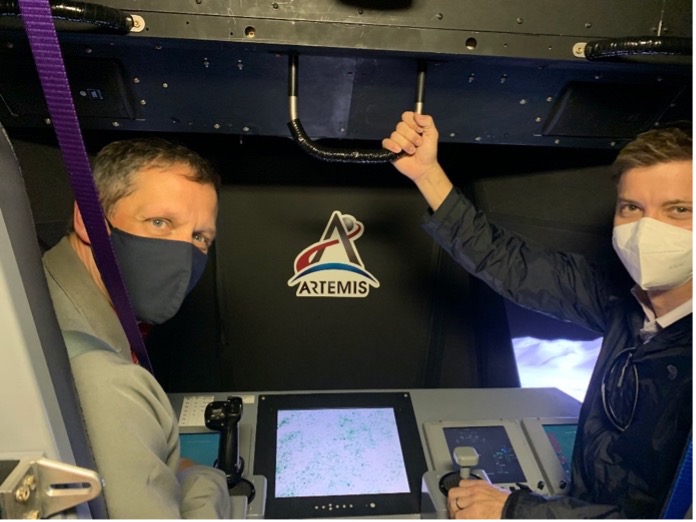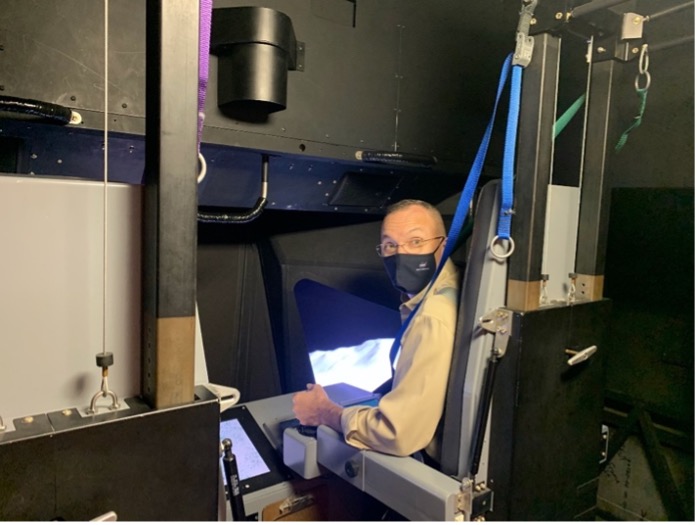On April 30, 2020, NASA announced the selection of three U.S. companies to design and develop candidate human landing systems (HLS) for the agency’s Artemis program, which will land the first woman and next man on the surface of the Moon by 2024. In November 2020, three critical Artemis stakeholders came to the SimLabs and to experience the capabilities of the Vertical Motion Simulator (VMS) first-hand. Astronauts and engineers from the NASA Astronaut Office, Dynetics, and Blue Federation each spent a day flying a legacy lunar lander simulation, allowing them to experience the VMS large motion envelope to better understand how the VMS facility can be used to develop, test, and certify the future Human Landing System.
The MFRA team continues to work effectively with our NASA customer to enhance VMS simulation capabilities for risk reduction and the ultimate success of NASA’s mission critical Artemis program. The goal of the Artemis program is to return humans to the moon and the Vertical Motion Simulator is slated to play a key role in HLS development and certification as well as training astronauts to safely land on the lunar surface.
Neil Otto, Program Manager for the SimLabs contract, had high praise for MFRA employees who were responsible for creating this opportunity for HLS stakeholders. “This was not a normal plug-and-play simulation. The team needed to migrate the existing Lander simulation over to a brand-new VMS operating system, test and troubleshoot new unavoidable problems, as well create new test conditions specific to the demo. They did all this with only a few weeks’ notice under very constrained conditions due to COVID restrictions. In the end, the stakeholders walked away extremely impressed with the value that the VMS can offer to the Artemis program, which makes a Herculean effort like this worth it in the end.”
Pictured (from left to right): NASA JSC Astronauts Bob Hines, Matthew Dominick, and Randy Bresnik, at Lunar Lander Demonstration in the Vertical Motion Simulator (VMS) on November 10, 2020

